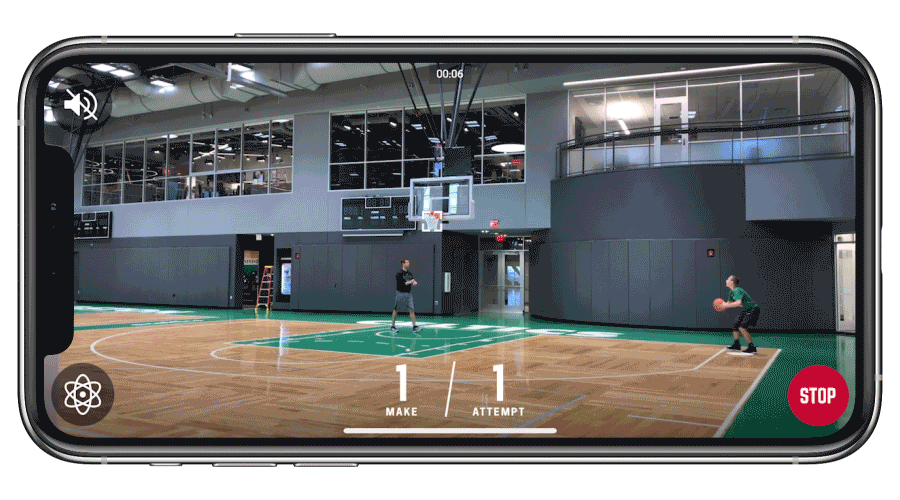Can AI score big in the future of sports? 5 key trends shaping the industry
Each year, interest in major sporting events like the Super Bowl, Champions League, Cricket World Cup, and Wimbledon increases, driving the sports market's 2023 valuation to $512.14 billion.
AI has the ability to accelerate this growth through increasing sports engagement, analysis and forecasting, along with delivering real-time data to players, broadcasters, sponsors and fans, cementing AI's role in the sports business.
Here are five AI trends influencing the future of sports.
1. AI for predicting player performance & injury prevention
One of AI's most prominent uses in sports lies in predicting player performance through data analysis.
For instance, Major League Baseball employs Statcast, an AI tool that monitors and assesses player movements, pitch velocity, launch angles, and exit speeds, offering comprehensive data to players, coaches, and fans.
In a similar vein, Stats Perform's ProVision offers performance data for multiple sports, including cricket, with coverage of batting, bowling, and fielding metrics. This data supports detailed analysis and comparisons, ensuring consistent ball-by-ball data collection across all formats (Test, ODI, T20).
AI-driven player analytics are also pivotal in injury risk assessment and prevention, ultimately improving player performance. For example, Sparta Science utilizes AI and a high-speed force-plate system to collect 3,000 data points per second in baseball, creating "Movement Signatures" for athletes and optimizing training programs.
The NFL, with Amazon Web Services, has created the Digital Athlete, an AI tool that uses TV footage and sensors in football gear to enhance player safety. By generating a digital replica of athletes in a virtual space and using machine learning and computer vision, it identifies impacts and suggests ways to reduce injuries, such as minimizing helmet contact.
2. AI for improving sports equipment
AI is also being used to augment and improve sports equipment. Here are a few notable examples:
In football, Google’s Jacquard tag is embedded in shoe insoles and uses machine learning to monitor movements like kicking and running, which can then be charted into the virtual world for both better fan engagement and player insights.
In golf, Altair’s AI-powered solutions combine simulation, machine learning, and data analytics to optimize club design and performance. AI-driven adjustments focus on factors such as center of gravity, durability, and spin, enabling the creation of clubs tailored to a broader range of player needs.
In tennis, the Hìtëkw tennis racquet was designed using text-to-image models like DALL·E and Midjourney. The racket boasts a lighter and stronger construction with its alien-like look.
In Formula 1, teams employ AI simulations powered by partners such as AWS, Dell, and Oracle to optimize race strategies by analyzing key variables like weather, competitors, pit stops, track conditions, collisions and mechanical issues. These simulations also identify car weaknesses and potential failures, helping teams stay within budget constraints.
3. AI for athlete training
AI, with its analytical prowess, can be a powerful tool when it comes to real-time monitoring, athlete performance evaluation, and training regimes.
Across various sports, its impact is apparent. For instance,
The NBA has teamed up with tech firm Second Spectrum to employ AI-powered data to assess both player and team performance, empowering coaches to make real-time strategic decisions. Second, Spectrum also partners with the Premier League and MLS.
Another NBA official partner, HomeCourt, utilizes AI to help basketball players refine their shooting technique and monitor their performance.
Seattle Sport Sciences employs AI to evaluate soccer players' skills, including foot preference, measuring first touch, and mapping 23 touch points while collecting player data. The company also partners with FIFA to calibrate goal-line technology.
In golf, Xonic Golf's app assesses golfers' swings using computer vision AI algorithms, offering personalized PGA Pro tips based on biomechanics, akin to having an expert caddie by one's side.
4. AI for enhancing fan engagement
Research indicates that approximately 57.5 million U.S. viewers watch digital live sports content monthly, with an expected increase to over 90 million by 2025. AI boosts fan engagement through personalized communication, enabling active participation and game analysis.
For instance, this year, Wimbledon collaborated with IBM to use AI for audio commentary and captions in online highlight videos. This service will be available through the Wimbledon app and website, separate from the BBC's coverage.
Another example is LaLiga, which leverages AI for immersive fan engagement, offering data-driven insights via its Beyond Stats software portal. Fans enjoy real-time analysis of player performance and goal probabilities, personalized content and enhanced live broadcasts with AI-generated graphics.
And Arsenal's "Robot Pires" chatbot on platforms like Facebook Messenger, Telegram, and Slack provides fans with match info, behind-the-scenes content and player statistics in an interactive and witty manner.
5. AI for fairer judging
Judging sports is a high-pressure and high-risk job involving split-second decisions, which can lead to controversy at times. AI is being tested in various sports to improve the process, making it more transparent and fairer.
For example, in boxing, Jabbr's DeepStrike compiles extensive match data into 50 key metrics for each fighter, enabling the detection of foul play like low blows or headbutts, thus combating cheating.
During the November 2022 FIFA World Cup in Qatar, AI aided referees by tracking player positions via cameras and a ball sensor.
Similarly, at the 2019 Artistic Gymnastics World Championships, Fujitsu's Judging Support System employed AI and 3-D sensors to convert gymnasts' movements into numerical data, aiding judges in their assessments.
AI's transformative potential in sports judging continues to evolve as it focuses on providing judgment free from human error and biases.
The takeaway?
With an ever-growing sports fanbase and constant AI advancements, it is inevitable that sports and AI will continue to intertwine, shaping existing and emerging industry trends. A case in point is the recent approval of an AI surveillance bill in France aimed at maintaining safety and security during the upcoming 2024 Olympics.
As the global AI in sports market is forecasted to hit $19.2 billion by 2030, it's clear that AI isn't just a buzzword; it has the potential to reshape how athletes perform, how fans engage, and even how games are judged.






